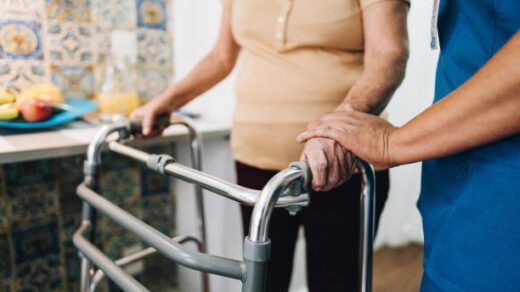Lights, Camera, AI: Scriptwriting and CGI Rendering in Film
This essay attempts to study the influence of artificial intelligence on two interdependent parts of contemporary motion picture making: screenwriting and computer graphics rendering. It is obvious that any periodic growth will create further possibilities for mechanization. From whatever angle I observe, I see a paradox. However, the downsides of an all-embracing focus are also evident.

The Impact of AI on Scriptwriting
A combination of creativity and artistry has always made scriptwriting one of the most challenging forms of writing. However, modern AI technologies are single-handedly changing the ways in which scripts can be written. Advanced AI-powered software, which incorporates algorithms alongside machine learning, has the ability to assist an individual during various stages of the scriptwriting process. These programs analyze exemplary screenplays, examine their internal frameworks, and even suggest captivating dialogues. Not only do they enhance productivity and efficiency, but they also provide insights that help kindle the writer’s imagination.
It is obvious that AI will aid in scripting, and perhaps some of the most profound advantages will come from AI’s potential to overcome writer’s block. This applies to nearly every author, as there comes a moment when progress on a project takes a frustrating turn when obstacles arise in terms of concepts or even the work’s trajectory. AI saves the day by analyzing thousands of data points and offering clear, direct solutions to the writers’ problems, thereby allowing them to focus on the underlying emotional issues rather than on the exhausting mechanics of writing, rewriting, and editing.
To aid in automation within the realm of scriptwriting, numerous tools have emerged. The following is a list of some recent AI tools that have come to the forefront:
Final Draft: While not strictly an AI tool, it incorporates AI features that help streamline formatting and story structure.
- ScriptAI: This tool generates plot ideas and character arcs based on user input and existing narrative data.
- Celtx: By leveraging machine learning, Celtx offers dynamic content suggestions during the writing process.
Using these tools brings forth various advantages, such as:
- Enhanced creativity through unique suggestions.
- Time-saving automation of mundane tasks.
- Data-driven insights into narrative trends and audience preferences.
CGI Rendering: Transforming Visual Storytelling
The development of computer-generated imagery (CGI) is perhaps the single most important advancement in modern filmmaking, as it makes it possible to create fictional worlds and characters. CGI rendering is performed using imaging applications that create both two-dimensional and three-dimensional models. This gives filmmakers the freedom to imagine any form of creative work. There are many milestones in CGI history that mark great achievements in artistic effects, which enhance narrative films and go far beyond merely creating stupendous spectacles for the audience. From “Jurassic Park” to “Avatar,” the awe-inspiring effects of CGI have worked wonders in the film industry and showcase the amazing possibilities of this technology.

With time, CGI has advanced from basic character animations and set creations to including detailed textures and sophisticated lighting. This is due to technological advancements and, almost single-handedly, to innovations in machine learning. It has become much easier for filmmakers to generate captivating visuals that emotionally engage and thoroughly immerse the audience in the movie’s plot using AI.
These are the different ways in which CGI rendering relies on machine learning for better efficiency and accuracy:
- Real-time rendering: AI can process CGI visuals faster, allowing for quicker adjustments and iterations.
- Enhanced realism: Machine learning algorithms can simulate real-world physics and environmental factors, creating more believable visual effects.
- Predictive modeling: AI can anticipate changes in lighting or motion to optimize the rendering process.
As I furthered my research on CGI, I realized that the interaction between scriptwriting and CGI is instrumental to CGI’s storytelling functions.
| Aspect | Traditional Method | AI Method |
|---|---|---|
| Script Development | Manual brainstorming with outline drafts | AI-driven idea generation and plot structuring |
| Visual Effects | Labor-intensive CGI creation | Rapid simulations and enhancements through machine learning |
| Feedback Gathering | Limited audience testing | Data analysis of audience preferences |
Combining Scriptwriting and CGI
When AI emerged, merging scriptwriting with CGI became simplified, giving filmmakers more options to enhance seamless storytelling. Capturing the audience’s focus is only possible with a great script and stunning visuals to accompany it. The use of AI in filmmaking facilitates the relationship between narrative and visual integration, as demonstrated by movies like “Inception” and “Ready Player One.” In these films, the combination of screenwriting and CGI was so sophisticated that the result was a multi-dimensional piece of art.
The Future of AI in Filmmaking
As technology advances, AI integration is likely to take the Hollywood experience to a whole new level. The upcoming virtual and augmented reality trends will most likely integrate with AI to provide unparalleled immersive experiences. Also, it is not far-fetched to envision an era where entire movies, including the plot and graphics, are generated with no human input for next-level AI-powered filmmaking.
Such developments are inspirational for young filmmakers and film students. Viewing AI as a partner rather than a replacement for human creativity opens up an entirely new realm of possibilities. It is now possible for them to achieve a balance between the two ends of the spectrum—technology and storytelling.
Conclusion
To sum up, artificial intelligence has evolved to such an extent that it is changing the film industry in ways that used to exist only in science fiction. From screenplay writing and CGI to other aspects of filmmaking, imagination and creativity can be deployed like never before. Filmmakers can craft beautiful stories and breathtaking visuals with the help of AI, reiterating the necessity for a union of human imagination and technological advancement. How the world of film will be in the days to come depends on the perfect balance of these two components.
Frequently Asked Questions
What are the advantages of employing AI in scriptwriting? AI can facilitate the concept development phase, provide novel perspectives, and enhance the quality of dialogue within the script.
How does the integration of CGI improve the experience of watching a film? CGI creates breathtaking images and scenes that complement the story and further captivate the audience.
Which films can serve as good examples of the integration of AI technologies? The use of AI in scriptwriting and CGI rendering has been seen in “The Irishman” and “Avengers: Endgame.”
Should we be concerned about AI taking over the creativity of human beings in filmmaking? While AI has made processes more efficient, completely replacing human input in creative storytelling will prove extremely difficult.
What advice do you give to upcoming filmmakers regarding their use of AI in their work? Look out for available AI technologies and understand their role as a supplement to your creativity rather than a replacement.


